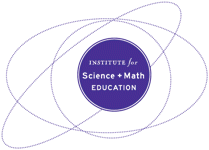How can we better understand and work toward equity in STEM education?

Teachers should reflect on how their instructional practices are, or are not, supporting students from marginalized communities—and shift their teaching to create opportunities & disrupt inequities.
State, district & school leaders have the power to disrupt, or uphold, inequities through curricula, policies, pathways, and professional learning opportunities.
Community Members should use the equity frames to help prioritize and improve educational opportunities and experiences for youth, especially for those most impacted by inequities.
What Is The Issue?
“Equity in STEM education is not merely a singular goal, but rather an ongoing process that requires intentional decision-making and action toward addressing and disrupting existing inequities and envisioning a more just future” (NASEM, 2024). But what counts as “educational equity,” and how do we build toward it in sustained ways? The Equity in K-12 STEM Education Report from The National Academies of Sciences, Engineering, and Medicine (NASEM) offers a pluralistic and nuanced definition and vision for equity in STEM education—as well as guidance about five equity frames stakeholders can use at different levels of the educational system.
Authors:
by Kelsie Fowler & Philip Bell | February 2025
Reflection Questions
Which equity frames are foregrounded in your context—by colleagues, administrators, community members, curricula, programs, or policies?
Which equity frames do you need to learn more about? How might you use a specific frame to transform an educational experience or teaching practice?
Things To Consider
The report presents five equity frames, which clarify specific dimensions of equity in STEM education. The authors recommend that decision-makers—including state, district, and school district leaders, as well as classroom teachers and community members—use the following equity frames to evaluate their current systems, create equity goals, and take action.
Frame 1: Reducing Gaps Between Groups—Aim to address gaps between different groups based on race, gender identity, or some other factor such as social class. Those gaps might be related to interest in STEM, achievement, or representation within the STEM workforce. The approaches tend to emphasize interventions, typically implemented in schools or within ecosystems, evaluated in terms of their ability to reduce such gaps, and they often target members of social groups.
Frame 2: Expanding Opportunity and Access—Focus on access to opportunities in STEM, such as those that result from differences in social and material resources necessary to learn—access to well-prepared educators, a network of adult and peer supporters for learning, and high-quality curricular experiences. Approaches to increasing access and opportunity vary but typically focus on changing conditions for access through policy changes within institutions or using strategies for brokering opportunities across institutions.
Frame 3: Embracing Heterogeneity in STEM Classrooms—Emphasize engaging with the concerns, lived experiences, and identities of students who have been, and often continue to be, marginalized in STEM education settings. Emphasize the importance of embracing the different ways of thinking, feeling, and being of young people within STEM classrooms.
Frame 4: Learning and Using STEM to Promote Justice—Center learning STEM as a resource within movements for social and socioecological justice. Throughout history, there are examples of ways that the STEM fields have been used as instruments in larger agendas of nationalism and colonialism, and their role as an instrument for justice for marginalized communities has been diminished, both in practice and within education.
Frame 5: Sustainable Futures Through STEM—Emphasize a role for STEM education in cultivating equitable, just, and thriving social and ecological futures that attend to and support both ecological and human wellbeing. This frame is very forward-looking and includes potentially re-imagining the structures and settings for schooling.
Attending to Equity
STEM education helps us navigate our worlds and can help solve wicked global challenges and cultivate just worlds. However, STEM learning opportunities are unevenly distributed, and a student’s race, ethnicity, socio-economic class, gender, language use, and other factors impact their education. Equity frames should be leverage with care, to avoid co-opting.
Recommended Actions You Can Take
Learn and Apply the Equity Frames: Study the five equity frames and learn about different projects, programs, initiatives, and policies that exemplify the various frames. Relate the frames to educational contexts you know well.
Conduct an Equity Assessment: Stakeholders should engage in critical reflection and complete an assessment—to identify areas of strength and develop strategic plans for guiding improvement.
Establish learning and accountability groups with other educators and educational decision-makers who share similar responsibilities and roles to support the development of critical consciousness and ensure that change reaches the students, families, and educators most impacted by inequity.
Administrators and school counselors should work toward dismantling tracking and other placement policies/systems that restrict students’ access to advanced—or quality—STEM learning.
ALSO SEE STEM TEACHING TOOLS
- #10 Indigenous Rights in STEM Ed
- #15 Equity in Science Ed Overview
- #71 Science Ed Equity Framework
- #97 Climate Justice Learning
STEM Teaching Tools content copyright 2014-22 UW Institute for Science + Math Education. All rights reserved.
This site is primarily funded by the National Science Foundation (NSF) through Award #1920249 (previously through Awards #1238253 and #1854059). Opinions expressed are not those of any funding agency.
Work is licensed under a Creative Commons Attribution-ShareAlike 4.0 Unported License. Others may adapt with attribution. Funded by the National Science Foundation (NSF). Opinions expressed are not those of any funding agency.


 Email Feedback
Email Feedback

